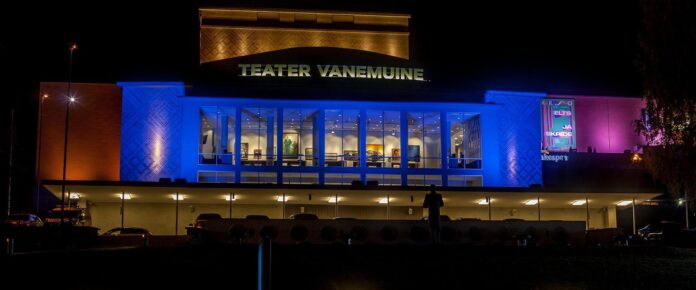IT solutions play a crucial role in the operations of theaters, ranging from office computers and tablets for artists to ticketing systems. These solutions are becoming increasingly central, and the Estonian IT Centre (RIT) now provides computer workplace services to the Vanemuine Theatre.
A specialized IT solution is essential for theater staff – the venue is equipped with screens. “Actors, dancers, and musicians move a lot from one rehearsal to another, and screens display all the important information for them,” explains Aivar Mäe, director of Vanemuine Theatre. “There are other specialized solutions in theaters, such as various drawing programs essential for creating stage decorations.”
Vanemuine Theatre recently replaced its entire computer fleet and transitioned to the computer workplace services offered by RIT. “This means that if a user has any issues with their computer or software, they can contact our IT support and find a professional solution to their problem,” explains Kairi Rais, Deputy Director of the Estonian IT Centre, regarding the standard service offered by RIT.
“In the Ministry of Culture’s domain, 33 institutions have transitioned to the central computer workplace service. Previous experience shows that this has been the right decision, and we wish to continue integrating other institutions within the ministry into RIT’s central service,” says Risto Raaper, Head of Information and Communication Technology (ICT) at the Ministry of Culture.
Both the government and the theater find the transition to central services appropriate
“When creating and implementing IT services, it is crucial to critically assess which services organizations should maintain and which ones are more cost-effective to outsource. The primary focus of organizations should be on managing, securing, and developing their core processes. IT services as part of the support process, should also be as cost-effective as possible,” suggests Raaper.
According to the Head of ICT, it makes sense to outsource full services, especially those not directly related to business services, and where the competencies don’t necessarily need to be in-house. “Examples of such services include computer workplace services, cloud services, and information security,” he adds.
Raaper emphasizes that a significant part of RIT’s services is information security. “The major advantage of centralized information security services is that the RIT team has an overview of threats and incidents on a broader scale, not only on an individual institution basis. Compliance with the Estonian Information Security Standard (E-ITS) requirements is also ensured,” adds Raaper.
“It’s good when support services are provided centrally,” says Mäe. “For instance, many theaters no longer handle accounting, and there’s only a financial manager; the rest is provided by the state. The same goes for IT services now – the state offers a centrally professional service, and theaters don’t have to deal with IT issues.”
“We have a previous example where our people created the computer program used in theaters by themselves. However, I believe that the theater should focus on its core activities, and IT professionals should handle IT matters. Therefore, the government’s plan to offer support services centrally suits us perfectly,” concludes the director of the theater.
Data to the government cloud
The state is also developing a government cloud – a cloud environment that enables offering centralized cloud solutions and related services to the public sector. “Data storage is also a relevant topic for theaters – all premieres are recorded and stored in our databases. Additionally, all performances are recorded and kept for 30 days for review in case of errors. Therefore, the government cloud would be crucial for us; we could reduce security risks and wouldn’t need to store data on local servers,” explains Mäe regarding the future needs of theaters.
The director of Vanemuine Theatre suggests that ideally, all IT solutions should come from one place. “Currently, RIT provides us with computer workplace services, and all specialized solutions such as drawing programs, resource programs, and the like are still the theater’s concern.”
Deputy Director Kairi Rais explains that RIT focuses on computer workplace and server infrastructure services to make them standardized across sectors. “The responsibility of each ministry overseeing a specific sector is to ensure the necessary business solutions, which we, in turn, can support in collaboration with the private sector. We can already offer the government cloud to theaters and other state institutions today.”
IT will play an even more critical role in theaters in the future
Mäe believes that in the future, there will likely be increasing emphasis on broadcasting performances, and people will be able to watch world-class shows on screens. “Examples of this already exist elsewhere in the world – for instance, La Scala and the Metropolitan Opera record their performances, and tickets can be purchased for their broadcasts.”
“In some places worldwide, interactive sheet music screens are used, allowing, for example, orchestral conductors to make corrections in the sheet music, instantly visible to everyone. Such solutions reduce the need for printing – currently, theaters still have an enormous need for printing,” Mäe speculates on future trends.
“In the future, stage design will also largely be done with computers,” Mäe predicts. “New young artists know how to take advantage of these possibilities. Designs can be dynamically altered, providing countless opportunities,” summarizes Mäe, highlighting that the role of IT in theaters will likely continue to increase.

